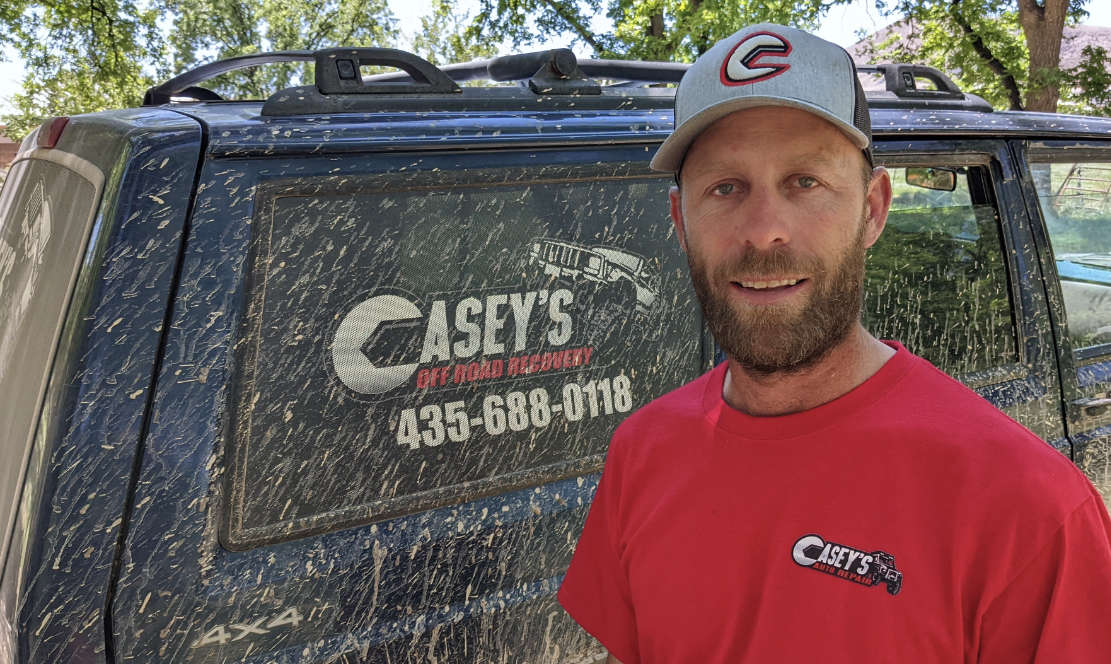
PEOPLE IN THE NOMAD COMMUNITY have different levels of experience—or inexperience—driving on unpaved roads. But that’s where the best dispersed camping spots are.
So, to maximize your enjoyment of the world beyond asphalt, while minimizing—and hopefully eliminating—any dirt road misadventures, we sought the advice of Casey Lofthouse, a twenty year veteran of off-road recovery.
CASEY: We own a business called Casey’s Off-Road Recovery. The name says at all. We get out there on the back country roads of southern Utah and northern Arizona. We’re always out and about gathering different types of vehicles that get themselves stuck in the sand or the mud or the snow. I spent many years doing Search and Rescue in Washington County and had the opportunity to serve as the Commander. It was a great experience and taught me a lot about recovery and the responsibility we have to do it efficiently and safely.
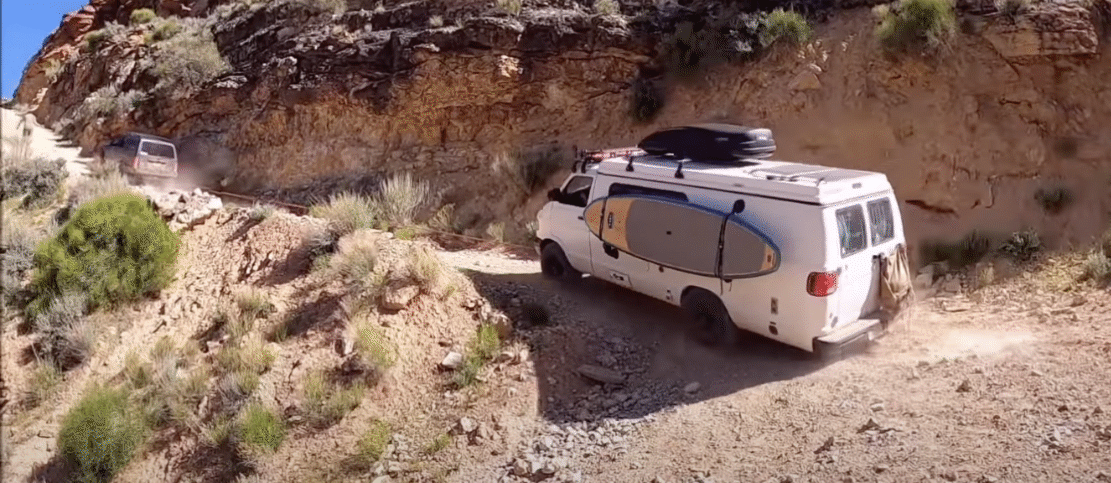
CRVL: What mistakes do you see most often?
CASEY: People driving outside of their capabilities. They get into trouble not being familiar with the area, not being familiar with their vehicle, not having the experience to be off road. Just going outside their skill set. That’s what gets them in trouble.”
CRVL: What general advice would you give people who haven’t had much off-pavement experience?
CASEY: Here in southern Utah, well, basically anywhere you go on the western US, they have secondary county roads that are pretty well maintained and bladed, and then they’ll have offshoot roads that go to a camping area, something like that. Most of those are in pretty good condition.
When you’re trying to decide if it’s a good road for you to go down, it’s important to look at the map. [See also this article about Forest Service maps.] And get some local knowledge of the area if you can. If you haven’t been down the road, you can reach out and ask somebody in the area if they’re familiar with it, especially before you take any of these bigger motorhomes or campers down that way. Find out if there are places to turn around.
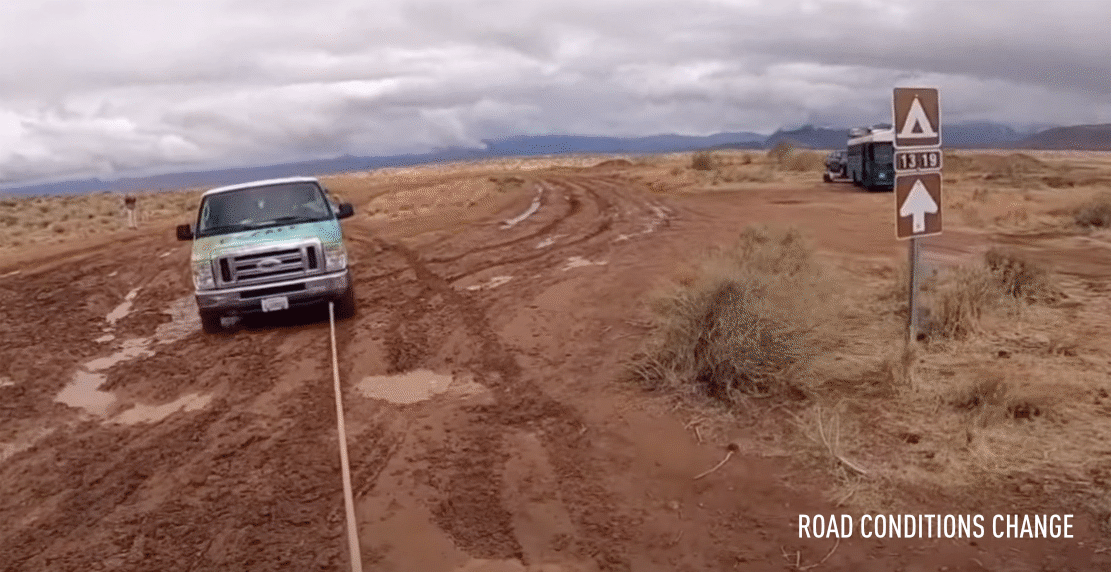
When you leave the highway, look at the condition of the roads. Some of them can turn really slick and snotty in the rain. Just watch your conditions. They can change so fast. If you see a roadway that has a lot of big ruts in it and big holes and the soft shoulders, and everything else, you know, check the weather before you head in there because you never know.
CRVL: Deep ruts are a warning sign to me. Someone before me had a hard time.
CASEY: Yep. If it rains you’re gonna be in trouble getting in and out of there. So be aware of the weather, too. And some roads are so rough that you wouldn’t want to beat your machines up on them.
Most of the camping spots are on pretty hard ground. The problem you run into is when you’re in an area that has a lot of sand, or it rains and becomes inaccessible. Then you can’t get in or out. But if you have what you need in your vehicle and you’re camping anyway, then just to stay a couple days till the ground’s dry and you can drive out.
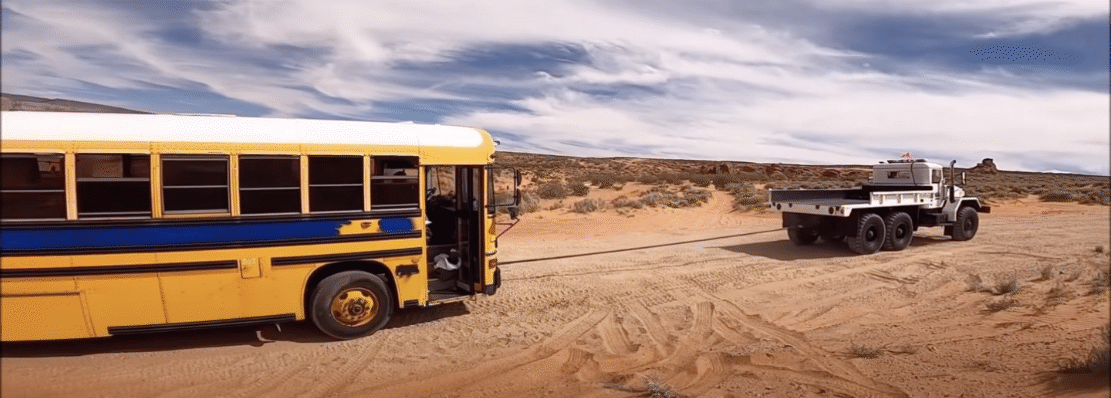
If you’re out in areas where it’s gonna be muddy you could actually put on a set of tire chains. They do wonders. Just rear tire chains on a rear wheel drive car or van, and they weigh enough they have pretty good contact pressure. So any of those type of, you know, situations on a bladed maintained road that gets a little sticky or gooey, you can put on a set of tire chains and really makes a huge difference.
CRVL: I’ve had some sketchy moments driving on deep, loose gravel.
CASEY: Yeah, you try going uphill and everything just starts coming out from behind you. So in those types of situations, you’re probably in the wrong place because there’s not really anything you can do in a gravely area to increase traction. Tire chains don’t help. If it’s level you can get a little momentum, but usually when you’re spinning and spinning the tires in the gravel, you’re just tearing up the tread.
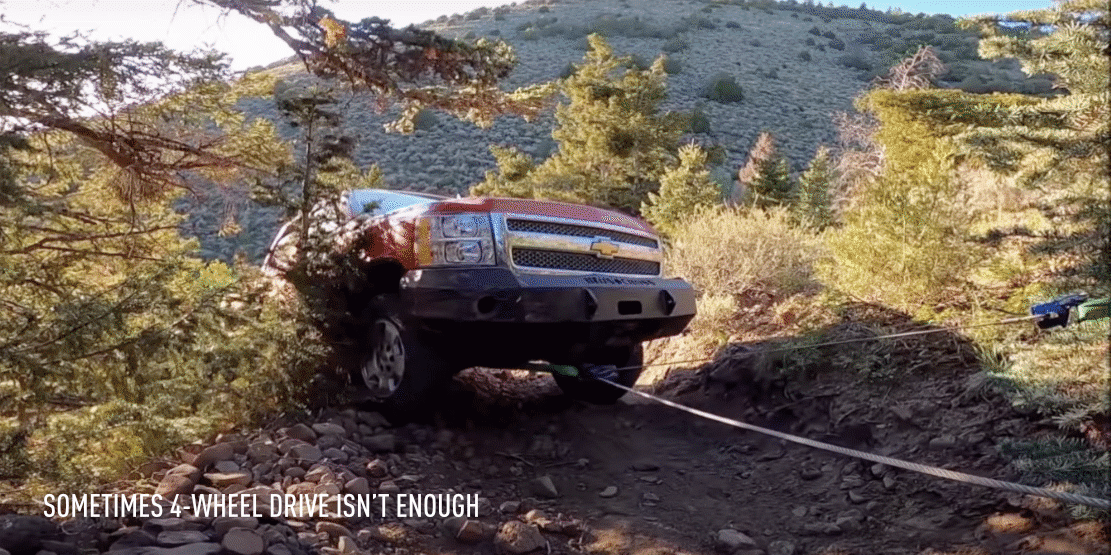
Well so any of those types of low traction areas, unless you’ve got experience off-roading, those are definitely better to avoid for sure.
If you have a section of road that’s really sandy and you can kind of see across it, there’s times where the sand will blow and leave two, or three inches of sand or whatever the case might be. And if you get in that situation going on in dirt road, if you’re in a newer van, turn your traction control off and keep your momentum, don’t slow down. Don’t stop. Just pound through it and get all the way to the other side of it before you slow down or stop.
Momentum is very important if you’re in a sandy situation. Stop before you get to the sandy section, get out and walk it and see how far you’ve got to go. And then if you feel comfortable doing it, just hit it with some speed and get through it.
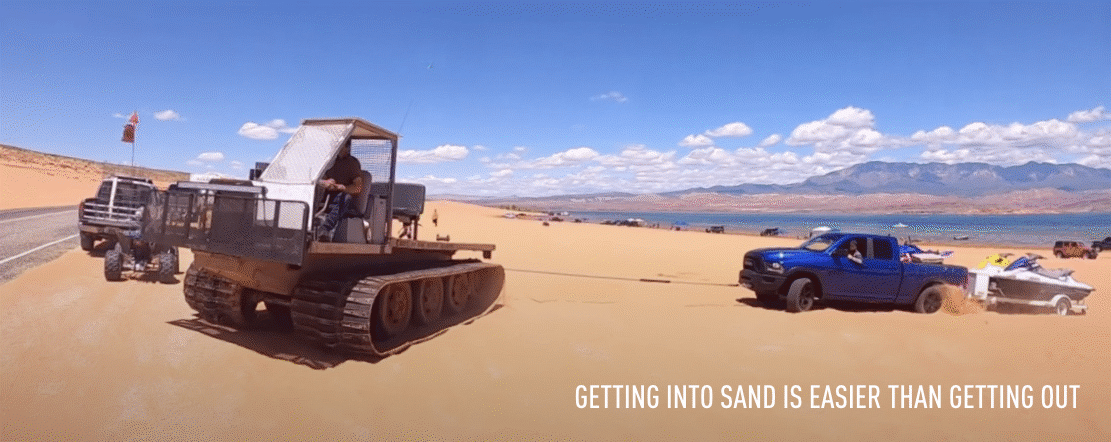
CRVL: I hear advice like, “If you get stuck in the sand you air down your tires,” and I’m thinking by the time you’re stuck it might be too late.
CASEY: Yeah, I mean if you’re if you’re in a situation where you’re still moving but you’re not moving very good, you can air down in the sand if you’re in a four-wheel drive or all-wheel drive van and it helps tremendously. You can air down to probably 20 pounds and it makes a world of difference. But you just need to remember when you go to get back on the highway, your tires are gonna be squishy and it’ll feel kind of sloggy. So you’ll if you don’t have a capability of onboard air and you can air them up before you hit the highway again, you’ll want to hit the nearest gas station and get them aired up to the right operating pressures. You don’t have to do it to get back to town. You just drive a little bit slower, and a little bit more cautious.
CRVL: What about traction boards?
CASEY: I don’t use them a lot in my line of work, but they work really well in muddy and sandy situations. They’ll help get you out of a situation, but I don’t think they’re a miracle either. They have their limits.
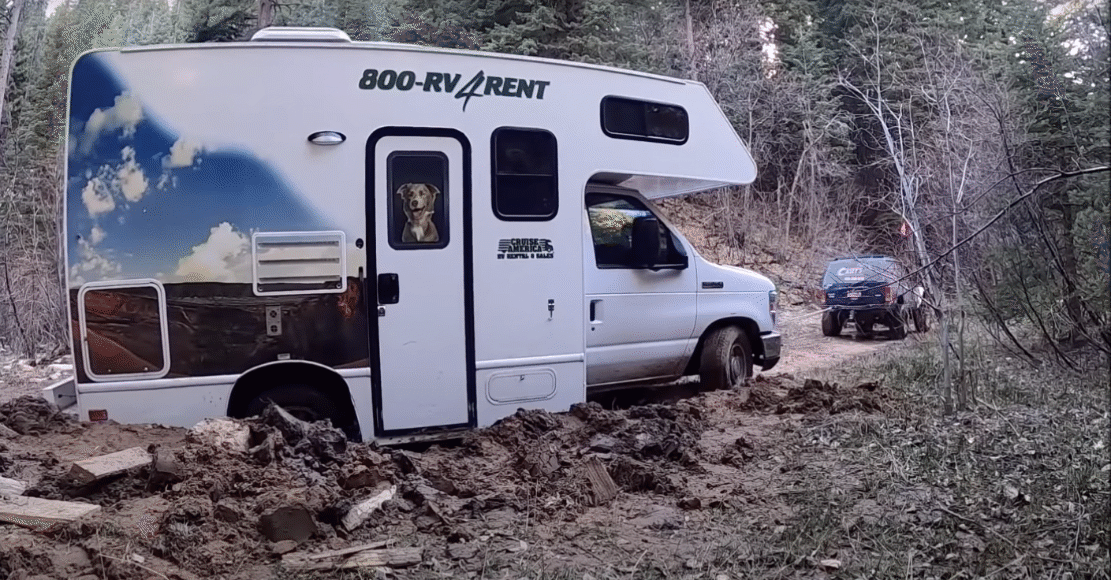
CRVL: There was that guy in one of your videos with a Class C way down the two-track.
CASEY: I see that all the time. What happened there is they got started down the road in a motorhome that was too wide for it. And there’s nowhere to turn around. So they were committed to either stop and back all the way up the road or continue on the route that their GPS had been telling them. So don’t trust your GPS if you’re not familiar with the area.
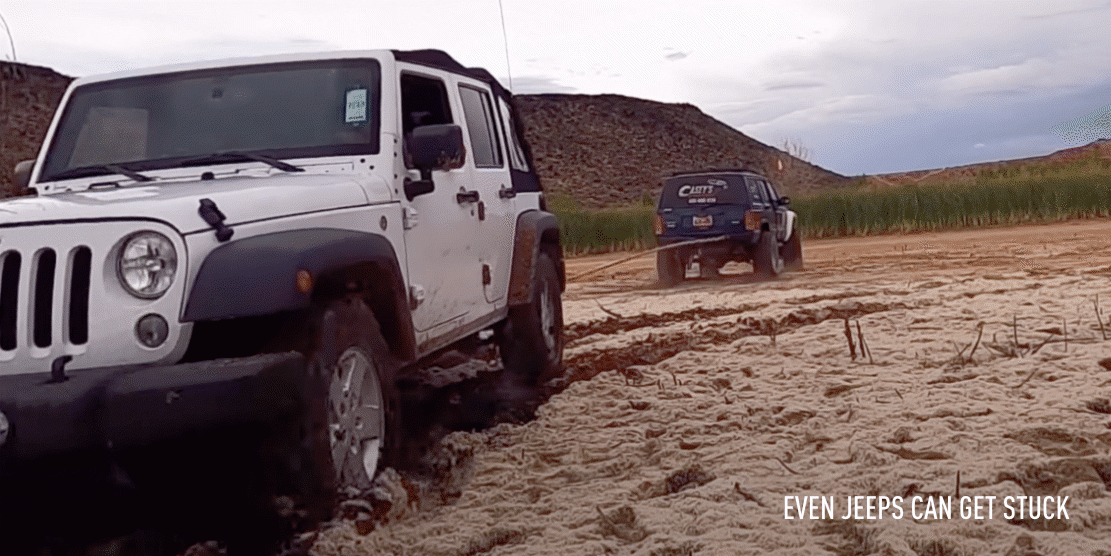
CRVL: Some people think since they have all-wheel drive they’re as unstoppable as full-time four-wheel drive.
CASEY: Well, all-wheel drive is definitely a bonus over just rear-wheel drive or front-wheel drive. The thing is, they don’t have positive drive engagement. So any tire can spin independently of the others. Unless it has the capability of locking up those differentials, or the front to the rear, to where they’re all four spinning, it has its limits.
One thing you want to remember on any of the newer vehicles. When you get in a low traction situation, if you want your throttle response, you have to turn off the traction control or it’ll cut your throttle response and it’ll feel like you don’t have any power. So you reach down and shut that traction control button off.
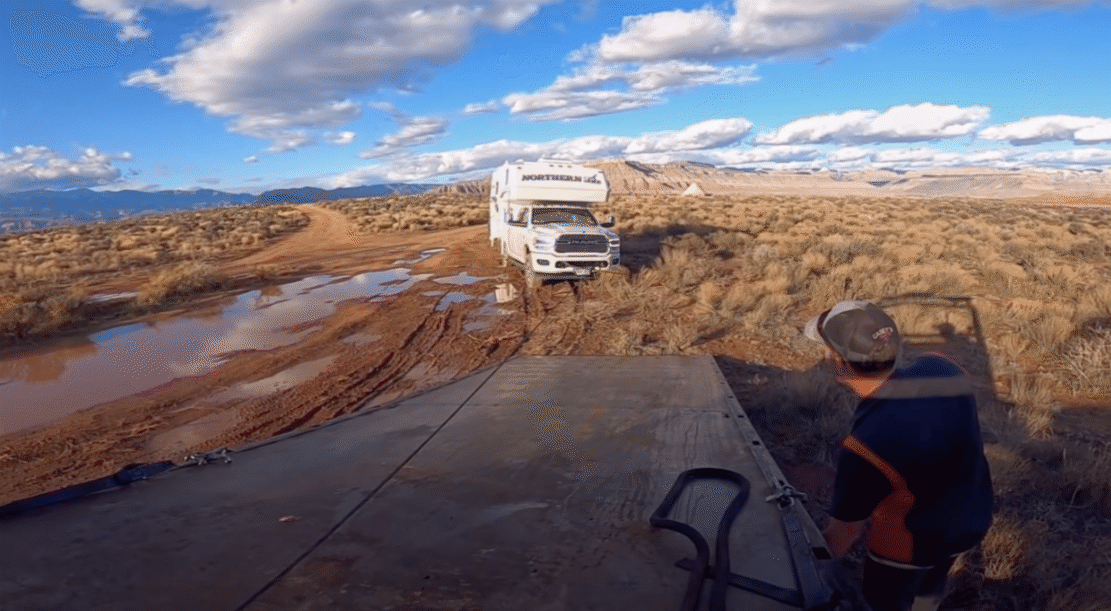
CRVL: Anything else?
CASEY: When you get out there, it’s always a good idea to have good communications, whether you want to use one of those emergency Spots [personal locator beacon] or some sort of a way to communicate with people if your cell phones don’t work. Communication is important.
And then another thing you want to remember when you’re out and about is try to at least let somebody know where you’re at, where you’re going, where you’ve been, whatever the case might be. Just make sure somebody knows where you’re at in case you don’t show up for a week or 10 days.
You could be out in the middle of nowhere and be stranded with no communication. So then you got a decision to make: do you stay with your vehicle or do you walk out? And the rule of thumb is always stay with your vehicle.
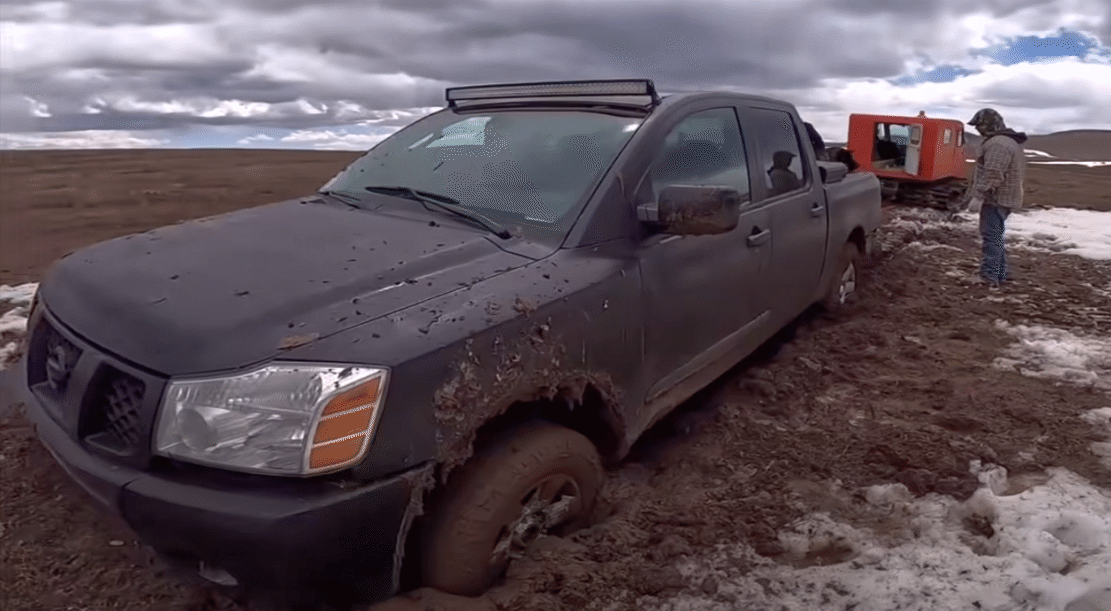
CRVL: That brings us to the Search and Rescue issue. What advice do you have?
CASEY: Well, number one is, you want to make sure you always have your help and safety and welfare items with you at all times. That’s water and food and warmth. You can last a long time if you have the proper equipment. And so, if you get out there in the back country and you find yourself incapacitated in your vehicle or stranded, or stuck in your vehicle, the rule of thumb is to stay with your vehicle.
If you don’t have communications where your vehicles at, you have a choice to make. Do you risk your life trying to walk 10 or 12 miles back to civilization? There are certain circumstances where if you have the proper equipment and you’re healthy, and the conditions were right, you could do it. You could walk back a few miles to get help, or if you thought, “Oh, I had cell phone service up the road a mile,” there’s certain situations in good weather with water and food you could walk back several miles and get help.
An emergency beacon or a Spot are pretty crucial if you get in an emergency situation. You could send a message to someone to say you’re stuck at this location and have non-emergency messages sent to certain people in your group, who could let others know you where you’re stuck and to get help coming. So if you’re out by yourself or with one other person, it’s not a bad idea to have a Spot or emergency communications device so you won’t have to expose yourself to more danger.
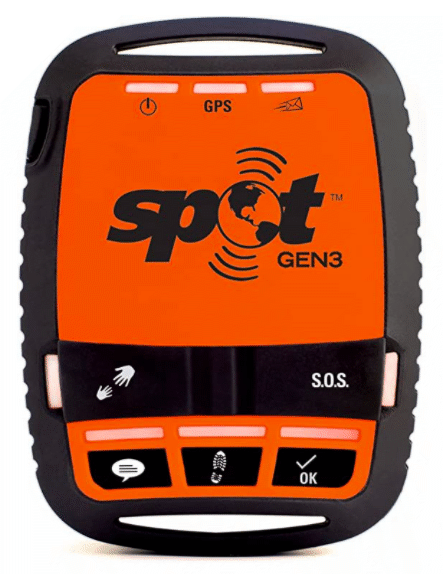
CRVL: What circumstances do people get into that requires Search and Rescue?
CASEY: Generally it’s people lost and out of water in our high temperatures, or they’re injured.
CRVL: Any problems with predators? Bears, mountain lions, etc?
CASEY: No, not really around here. We have bears at higher elevations, but they’re scared of people. They don’t cause a problem. You could have a problem in places like Yellowstone. If you’re in bear country and you’re worried about it, you should have bear spray with you. There might be a mountain lion of coyote preying on your small pet, though.
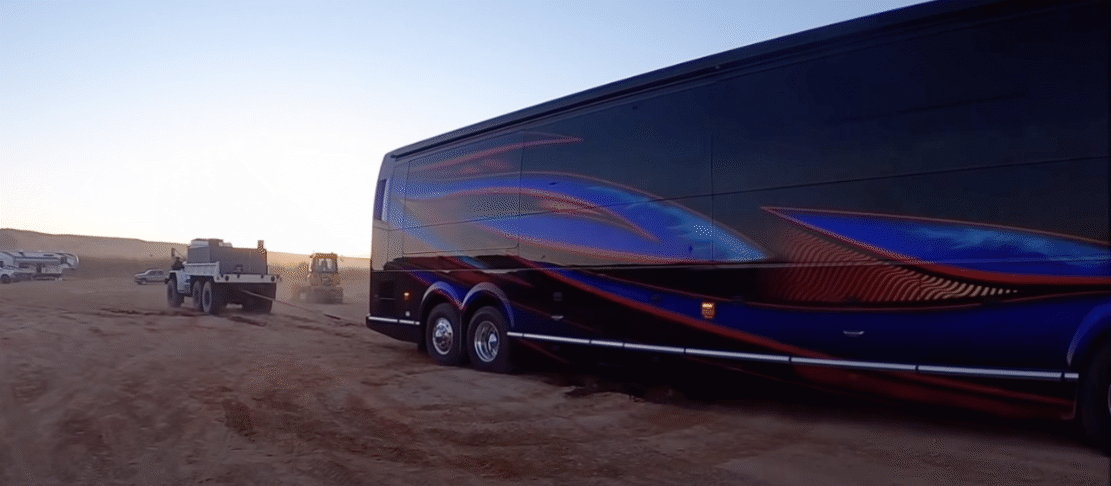
CRVL: You have quite a fleet of recovery vehicles.
CASEY: I’ve got a Suzuki Samurai, a Cherokee, a diesel pickup to pull a flatbed trailer, two military 5-tons, and a Nodwell. That’s an 11,000 pound behemoth of a tracked vehicle that was designed for the bog and muskeg of the Canadian outback. It has tracks 17 feet long, both 40 inches wide. The displacement is about half a pound per square foot, so it goes over the snow, mud and sand, and it’ll pull whatever you hook to it.
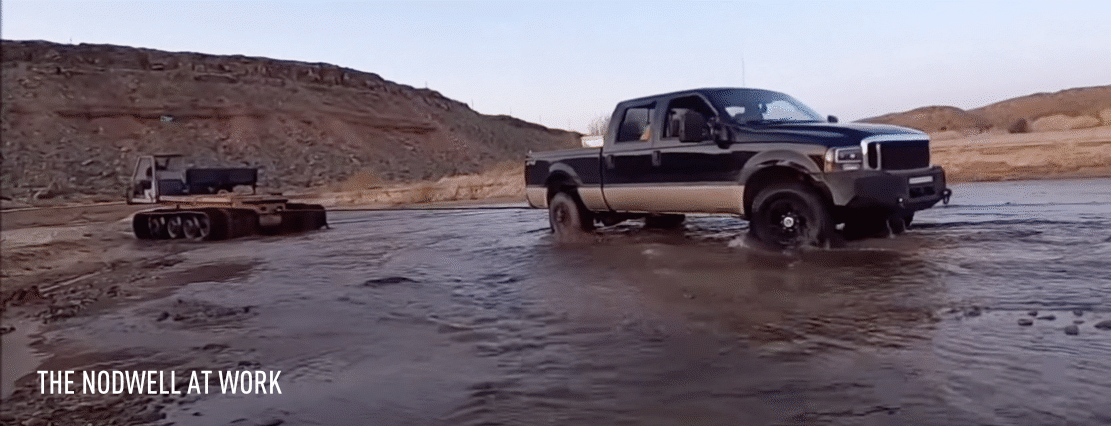
My military 5-tons are worth their weight in gold to me. They prove their value to me on a regular basis.
I like to be a professional at what I do and bring the right equipment for the job. Small trucks to pull small vehicles in tight spaces, and big trucks for big vehicles like motorhomes and fifth-wheelers.
CRVL: I leaned about having slack in the tow rope so you can establish some momentum.
CASEY: Twenty years ago we started using kinetic recovery ropes, and they’re very effective, but there’s a lot of knowledge about the responsible and safe way to use them. Any time you’re using a kinetic recovery rope, you back up, give yourself four to six feet of slack, then give the tow vehicle some rolling momentum—you don’t have to hit the end of it like a crazy man—just a nice rolling momentum, and see if that moves the vehicle. If not, you give yourself a bit more of a run. They work really well in sand and mud and those types of soft surfaces.
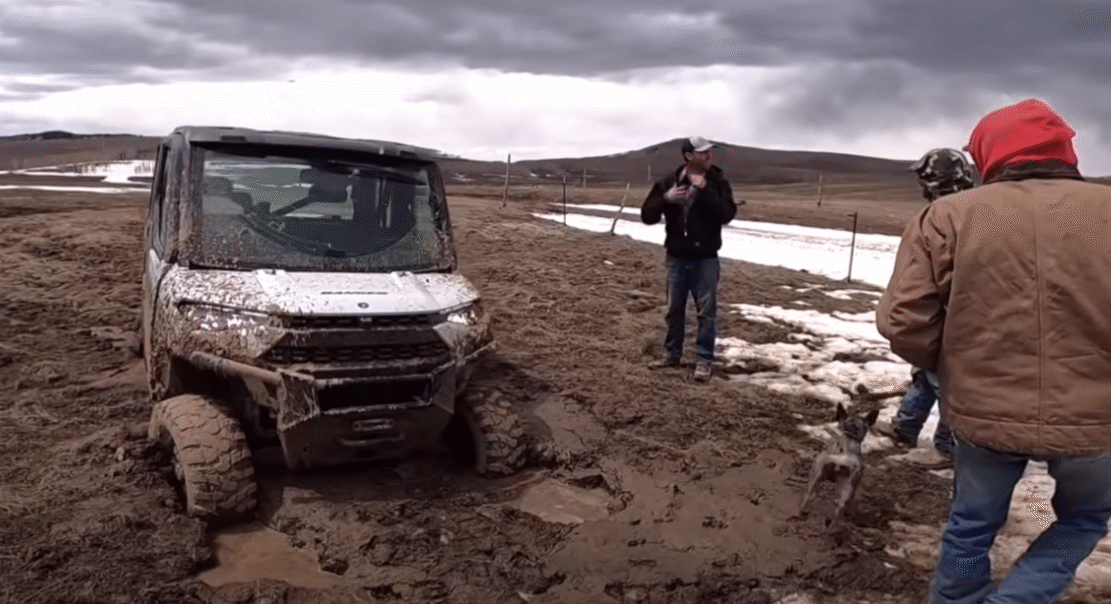
Also, shovels are important, particularly if you’re alone. A good shovel can get you out of a lot of situations. Just spend a little time digging, stacking rocks.
And having a good jack, like a light aluminum floor jack, can be crucial sometimes. You can do a lot with it.
CRVL: Thanks for sharing with us, Casey, even though your advice might reduce some of your business.
CASEY: No problem. Basically, if you ever encounter road conditions that have you worrying, don’t push your luck. Don’t get in over your head. If you’re out and about, enjoy yourself. Just be cautious of the kinds of surfaces you’re on, and of the weather.
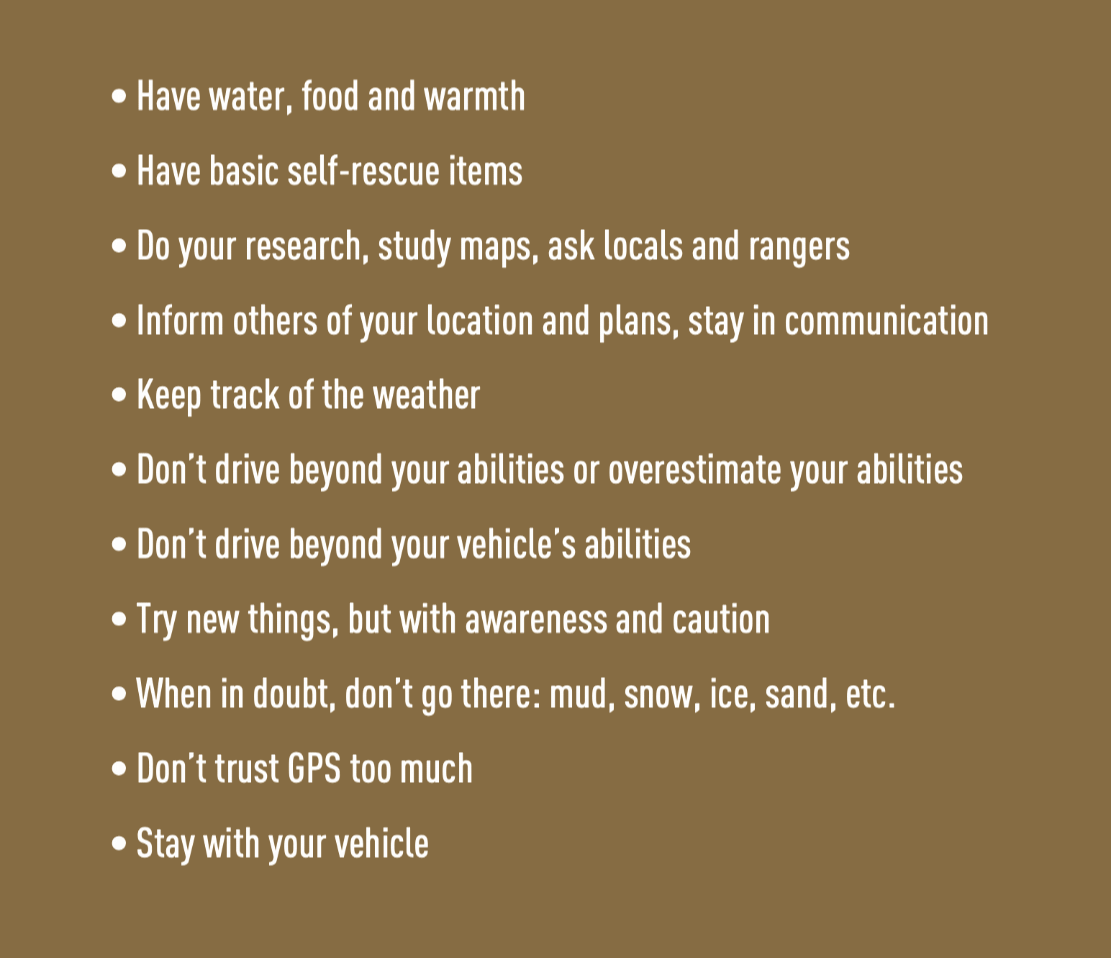

I once pulled a guy out that had a tall 4 wheeler with big lugged tires get stuck in a lake bottom nearly up to his axles. At least 6 other big wheel 4×4 trucks tried each to pull him out. He was at the point of giving up and so where his buddies. We were in my friends old timer Whiley’s jeep pickup truck with narrow have lugged classic jeep truck tires, WWII style. That all laughed at us. But I insisted. I had about 70ft of mountain climbing rope I keep just for this problem. The stuck guy had real nice lugs on the side edges of all his tires. He was in 2ft deep muddy ruts. But the mud was like real heavy firm clay. I told him that we were going to get off at a 45 degree angle and pull his tires lightly against the sides of the ruts he was stuck in. He would use his own truck to pull himself up and out with the added traction he would get from the very light side pull.
It worked. He popped right out and drove out of the mess. All the people that laughed at us all started saying old school, old guys wisdom. It worked because the mud was firm enough for the sidewall lugs of his tires to grab enough to drive right out.
Go to the experts!
And of course, experience is priceless!
Thank you.